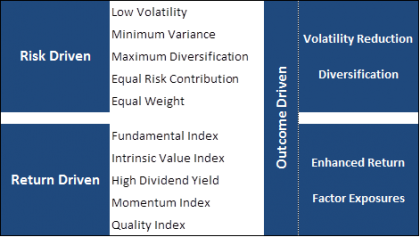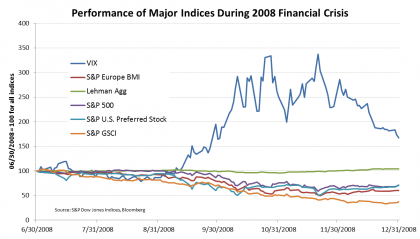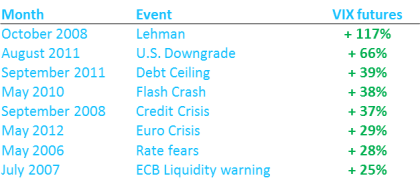It is now a well-established trend that institutional investors are allocating to smart beta / risk premia strategies. In a recent survey of 300 institutional investors, 42% of the investors say they have committed a portion of their portfolios to smart beta, while a further 24% say they intend to do so in the future. Regionally speaking, Europe has led the way in the adoption of smart beta, as there are a much higher percentage of European institutional investors making allocation than that of North America and Asia Pacific.
Smart beta strategies typically capture some of the well-known systematic risk premia, such as small cap, value, low volatility, momentum and quality in equities, as well as curve, value, and momentum in commodities. Investors are increasingly using such strategies as building blocks of asset allocation, often with an objective to achieve certain investment outcomes, such as volatility reduction, diversification, and return enhancement.
Exhibit: Categorization of Smart Beta Equity Strategies
Source: S&P Dow Jones Indices.
The development of smart beta strategies represents an opportunity for individual and institutional investors, as it expands the toolkits investors can use in their portfolio construction and asset allocation. As investors become increasingly aware of the potential benefits and risks of smart beta strategies, the adoption of smart beta may continue to gather pace over the coming years. In particular, investors may increasingly take a multi-factor and multi-asset-class approach to smart beta investing, where they aim to harvest risk premia across asset classes via efficient and low cost vehicles.
Join us at our complimentary seminars to hear our panel of industry thinkers discuss the trends, opportunities and challenges in incorporating smart beta and risk premia strategies in asset allocation. Register here: http://bit.ly/1jDrPqj
The posts on this blog are opinions, not advice. Please read our Disclaimers.









